I tried a camera calibration with python and opencv to find the camera matrix. I used the following code from this link
https://automaticaddison.com/how-to-perform-camera-calibration-using-opencv/
import cv2 # Import the OpenCV library to enable computer vision
import numpy as np # Import the NumPy scientific computing library
import glob # Used to get retrieve files that have a specified pattern
# Path to the image that you want to undistort
distorted_img_filename = r'C:\Users\uid20832\3.jpg'
# Chessboard dimensions
number_of_squares_X = 10 # Number of chessboard squares along the x-axis
number_of_squares_Y = 7 # Number of chessboard squares along the y-axis
nX = number_of_squares_X - 1 # Number of interior corners along x-axis
nY = number_of_squares_Y - 1 # Number of interior corners along y-axis
# Store vectors of 3D points for all chessboard images (world coordinate frame)
object_points = []
# Store vectors of 2D points for all chessboard images (camera coordinate frame)
image_points = []
# Set termination criteria. We stop either when an accuracy is reached or when
# we have finished a certain number of iterations.
criteria = (cv2.TERM_CRITERIA_EPS + cv2.TERM_CRITERIA_MAX_ITER, 30, 0.001)
# Define real world coordinates for points in the 3D coordinate frame
# Object points are (0,0,0), (1,0,0), (2,0,0) ...., (5,8,0)
object_points_3D = np.zeros((nX * nY, 3), np.float32)
# These are the x and y coordinates
object_points_3D[:,:2] = np.mgrid[0:nY, 0:nX].T.reshape(-1, 2)
def main():
# Get the file path for images in the current directory
images = glob.glob(r'C:\Users\Kalibrierung\*.jpg')
# Go through each chessboard image, one by one
for image_file in images:
# Load the image
image = cv2.imread(image_file)
# Convert the image to grayscale
gray = cv2.cvtColor(image, cv2.COLOR_BGR2GRAY)
# Find the corners on the chessboard
success, corners = cv2.findChessboardCorners(gray, (nY, nX), None)
# If the corners are found by the algorithm, draw them
if success == True:
# Append object points
object_points.append(object_points_3D)
# Find more exact corner pixels
corners_2 = cv2.cornerSubPix(gray, corners, (11,11), (-1,-1), criteria)
# Append image points
image_points.append(corners)
# Draw the corners
cv2.drawChessboardCorners(image, (nY, nX), corners_2, success)
# Display the image. Used for testing.
#cv2.imshow("Image", image)
# Display the window for a short period. Used for testing.
#cv2.waitKey(200)
# Now take a distorted image and undistort it
distorted_image = cv2.imread(distorted_img_filename)
# Perform camera calibration to return the camera matrix, distortion coefficients, rotation and translation vectors etc
ret, mtx, dist, rvecs, tvecs = cv2.calibrateCamera(object_points,
image_points,
gray.shape[::-1],
None,
None)
But I think I always get wrong parameters. My focal length is around 1750 in x and y direction from calibration. I think this couldnt be rigth, it is pretty much. The camera documentation says the focal lentgh is between 4-7 mm. But I am not sure, why it is so high from the calibration. Here are some of my photos for the calibration. Maybe something is wrong with them. I moved the chessboard under the camera in different directions, angles and high.
I was also wondering, why I dont need the size of the squares in the code. Can someone explains it to me or did I forgot this input somewhere?


